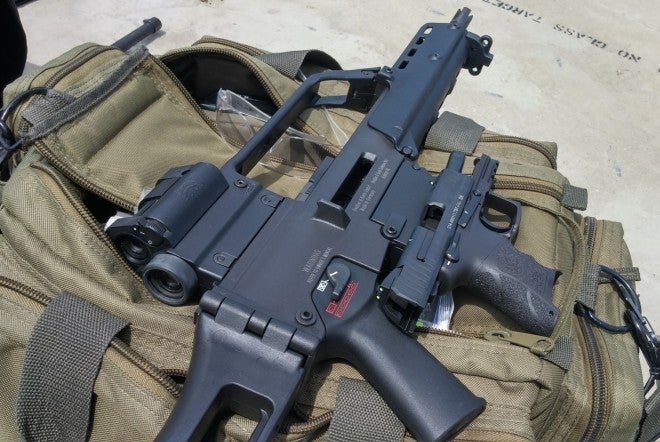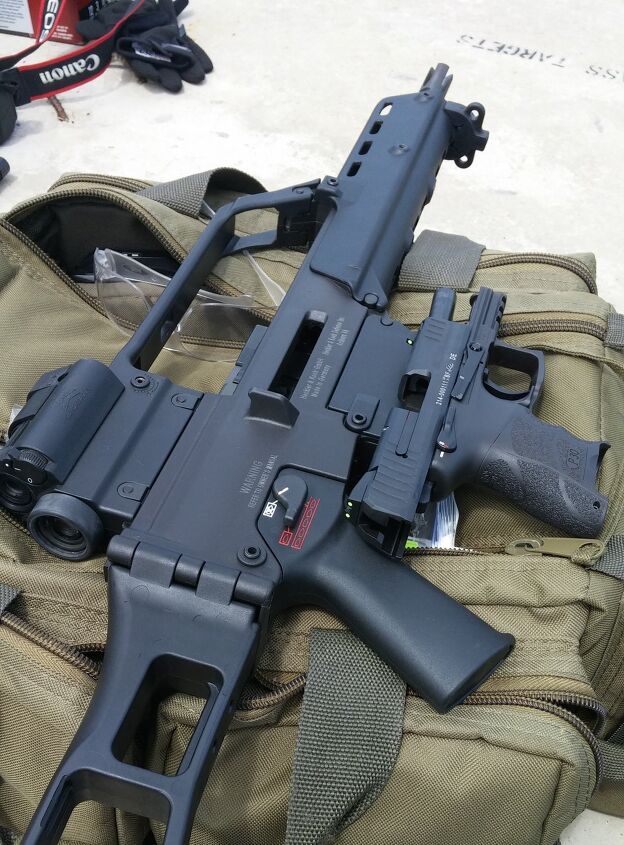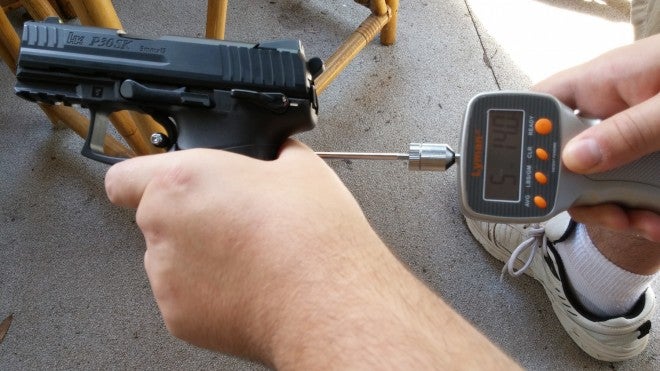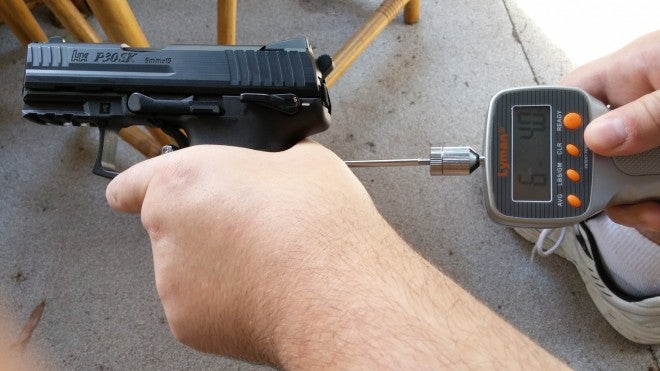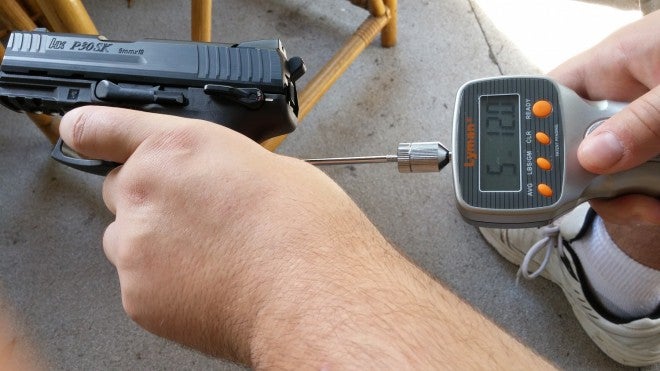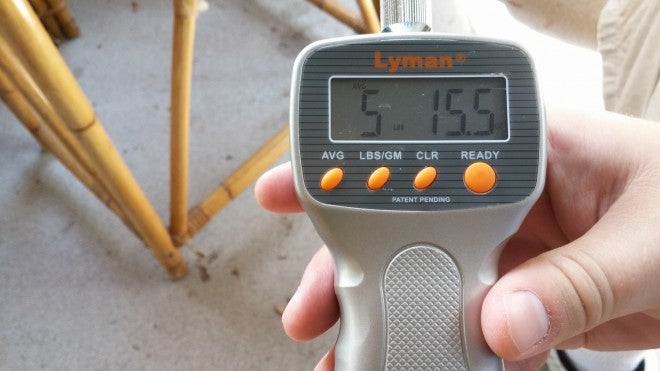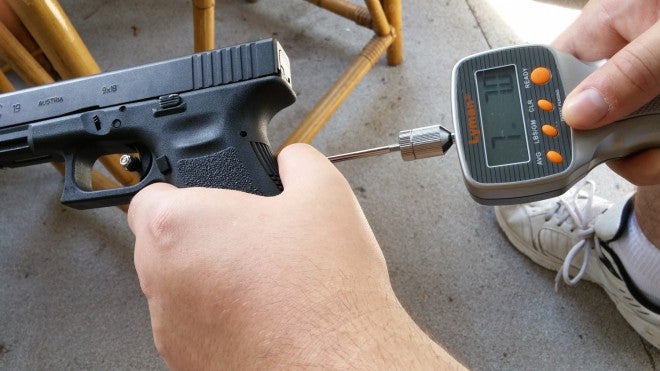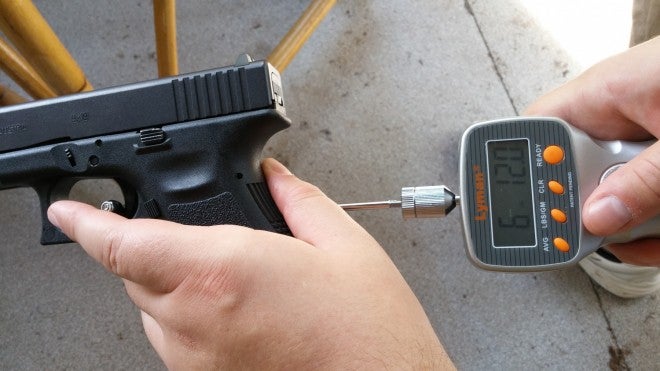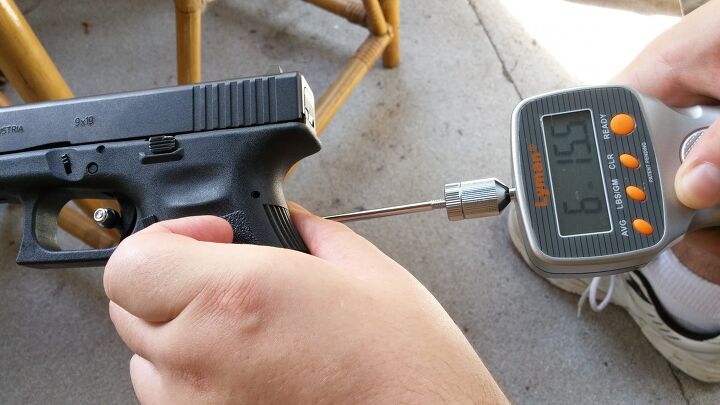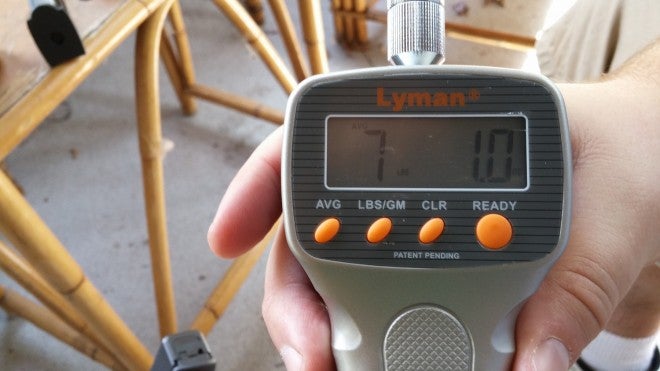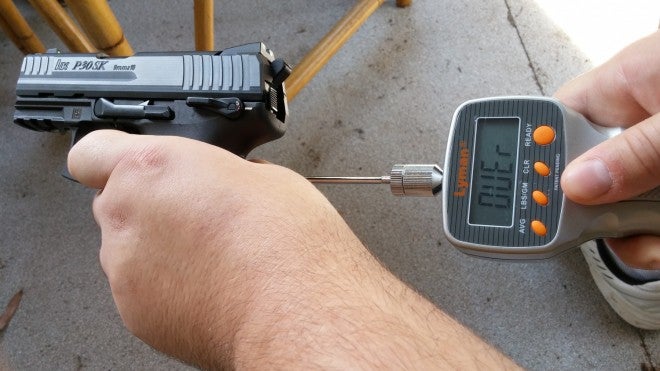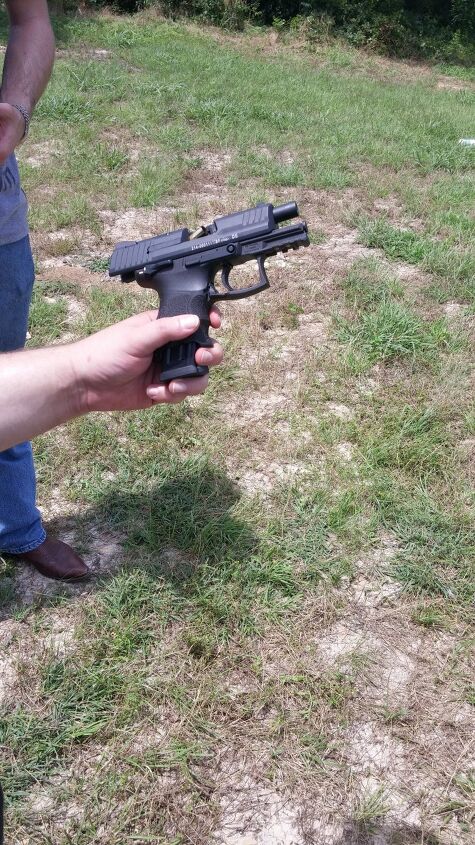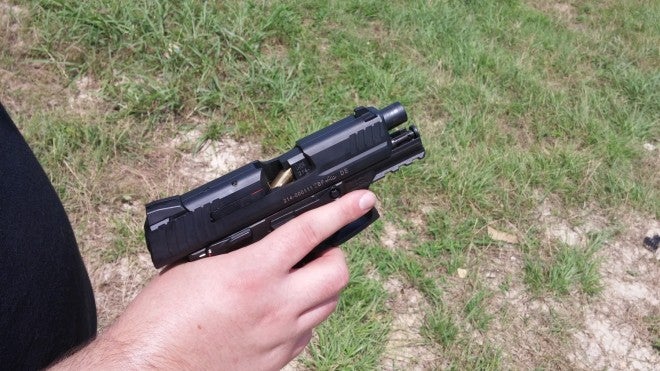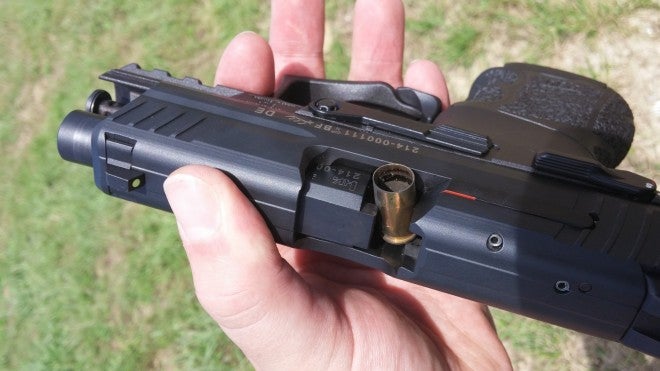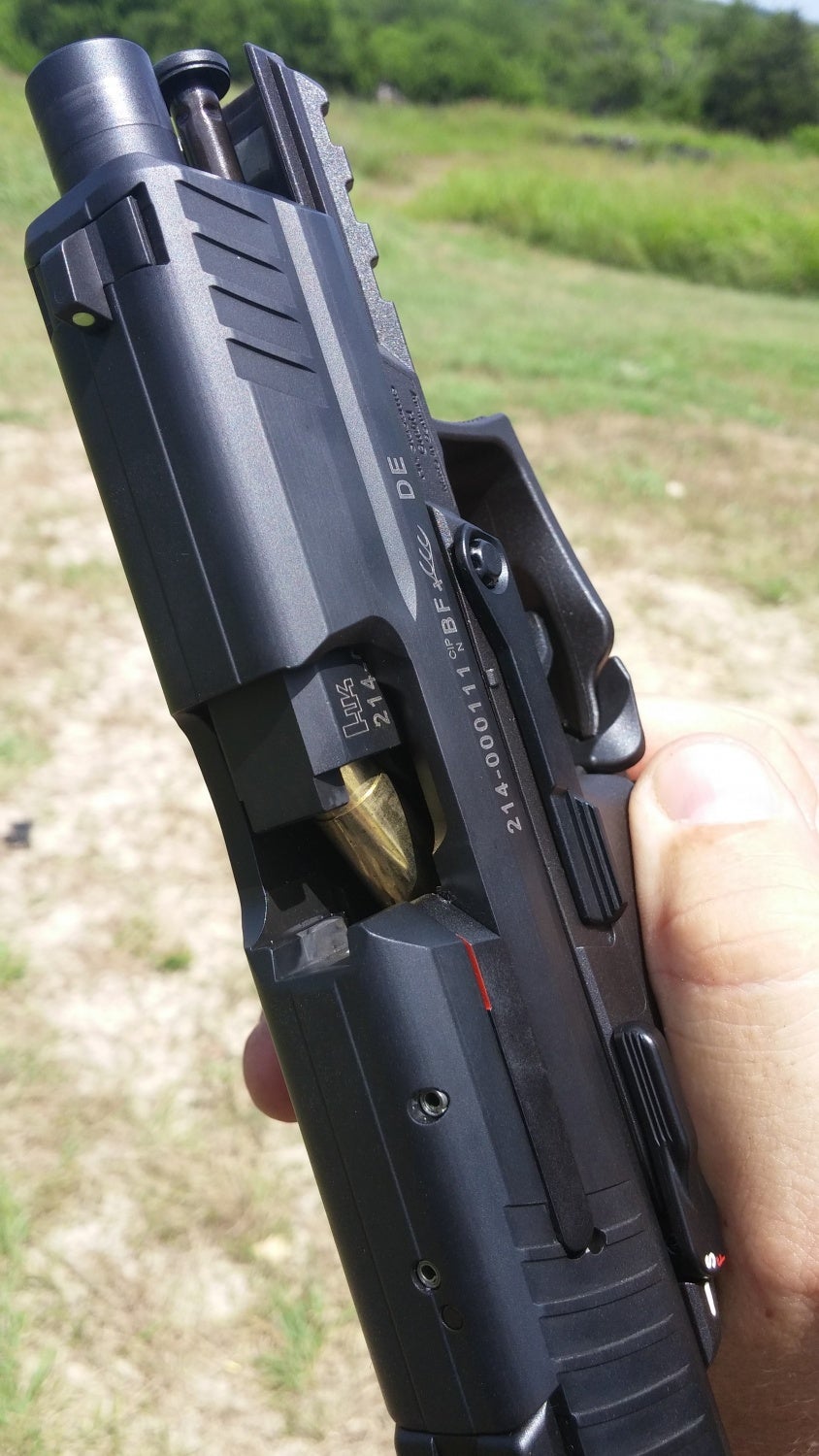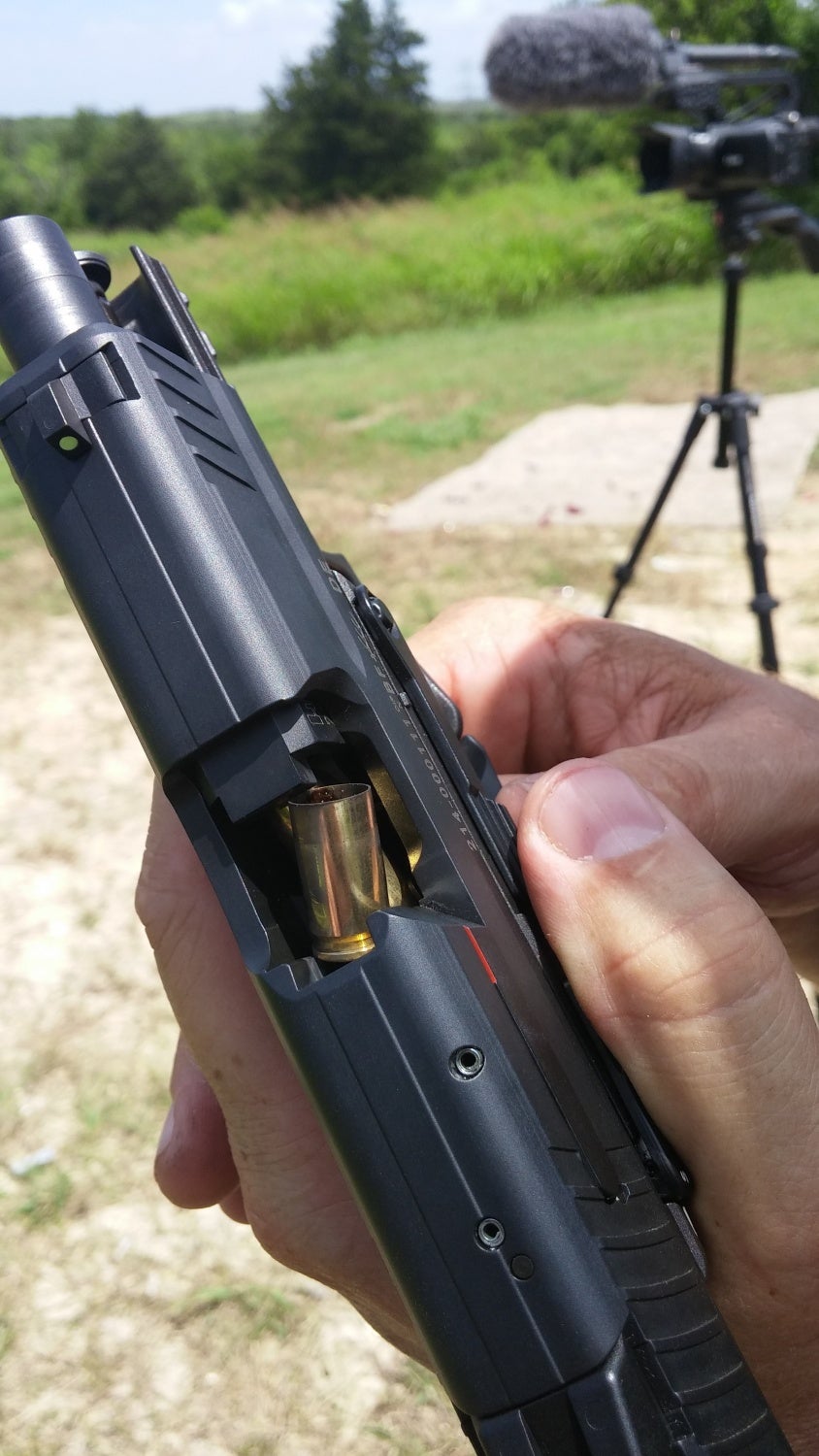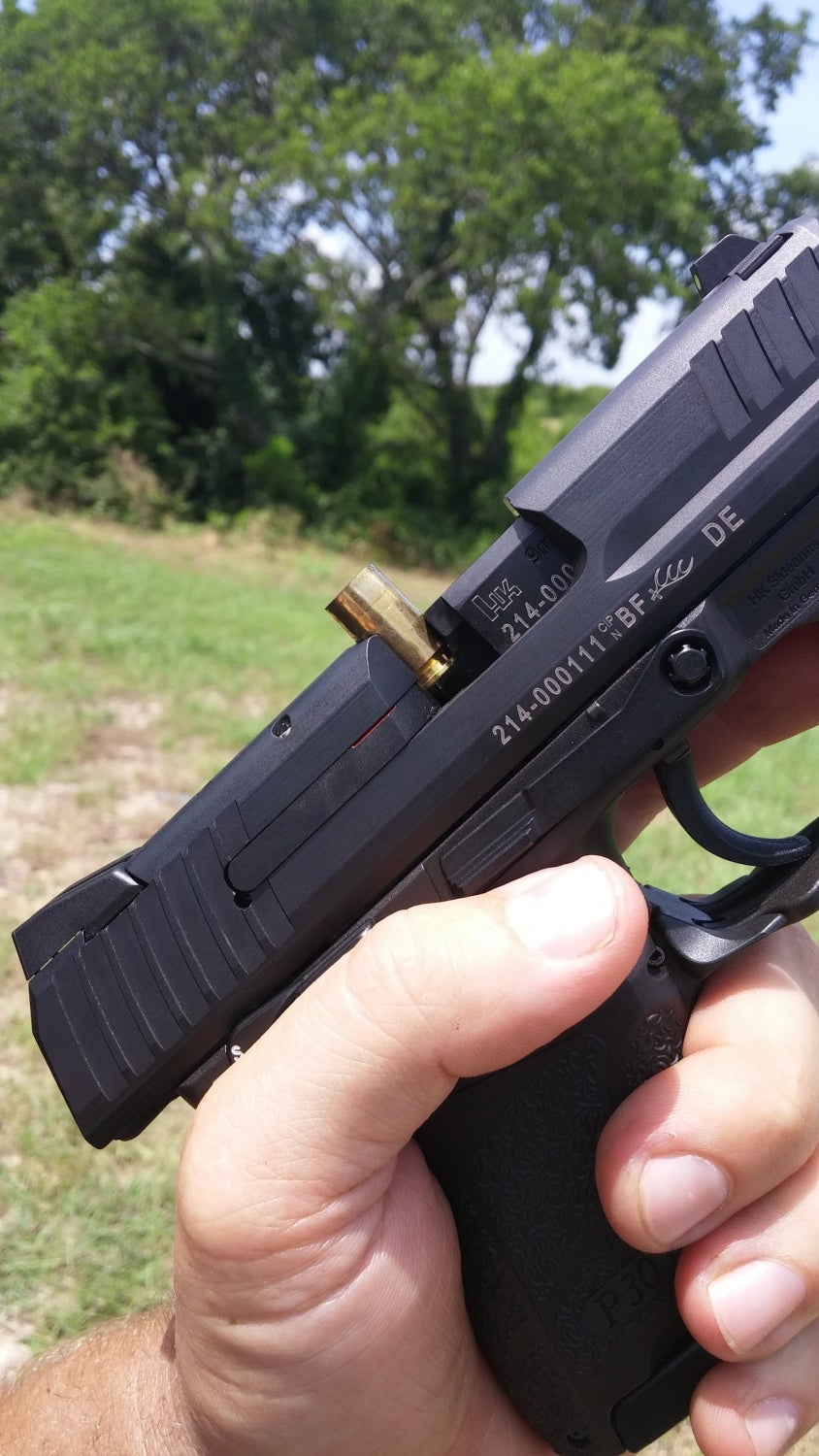Heckler & Koch’s recently released P30SK is the subcompact version of their hammer-fired mid-sized P30 9mm handgun. The P30SK shares its basic design features with the P30, but has a shorter 3.27″ barrel and shorter grip with a 10-round double stack magazine. Roughly comparable to a Glock 26, the P30SK features the same ambidextrous safety as the P30S model, as well as a decocking button at the rear of the slide. The P30SK comes in six models with three different kinds of trigger groups (any of the three available with or without night sights), including P30SK LEM “V1” light DAO, P30SK “V3” DA/SA without safety but with decocker, and P30SKS “V3” DA/SA with safety and decocker. The model I received for T&E was the P30SKS V3 model with night sights.
That Heckler and Koch handguns are well-made is universally known in the shooting world. In contrast to my utilitarian Glock 19 the P30SK has an attractive style, a lustrous dark black finish, and a number of additional features.
Chief among these features is the V3 DA/SA fire control group. While I personally prefer the simplicity of the Glock’s arrangement, for those who like DA/SA guns, the V3 fire control group is designed to offer the maximum number of possible actions to be combined and performed in any order. The safety can be activated with the hammer forward or back, the slide racked with the safety off or on, the hammer cocked with the safety off or on, etc. As a result, the gun can be carried in any mode the user wishes, from cocked and locked, decocked and on safe, decocked safety off, to a drop-safe cocked/safety off mode. The ability to clear the P30SK while on safe and the dedicated decocking button at the rear of the slide make the P30SK a very safe pistol, if the user wishes.
Though the P30SK is hammer fired, the trigger felt to me to be very similar to the striker-fired unit in my Glock, albeit a bit lighter. Averaging three trigger pulls, the P30SK’s trigger clocked in just a hair below six pounds:
In comparison, the Glock’s trigger was just over seven pounds:
Of course, the double action on the P30SK is deliberately heavy, but it’s still worth mentioning that it was at least above 12 pounds weight:
Like its bigger brother, the P30SK comes complete with a set of interchangeable grip panels and backstrap. I tried each configuration and settled on the smallest, partly because I feel that smaller grips are a lot more comfortable in general, and partly because I knew I wouldn’t be the only one shooting the pistol. HK’s interchangeable backstrap system is easy to use, requiring only a punch of the correct size and a hammer, and the grip stays together well enough that the gun can be shot for a short period of time to determine the correct fit. Obviously, once a grip configuration is decided upon, the pin should be replaced for a more permanent solution. I really liked H&K’s system, and the P30 family’s grip in general.
One thing that was immediately apparent about the P30SK was its size. It is a surprisingly large pistol for its class, partly because it is hammer fired. It certainly is larger than a Glock 26 (although I did not have one on hand for comparison), and it is even comparable in some respects to the Glock 19:
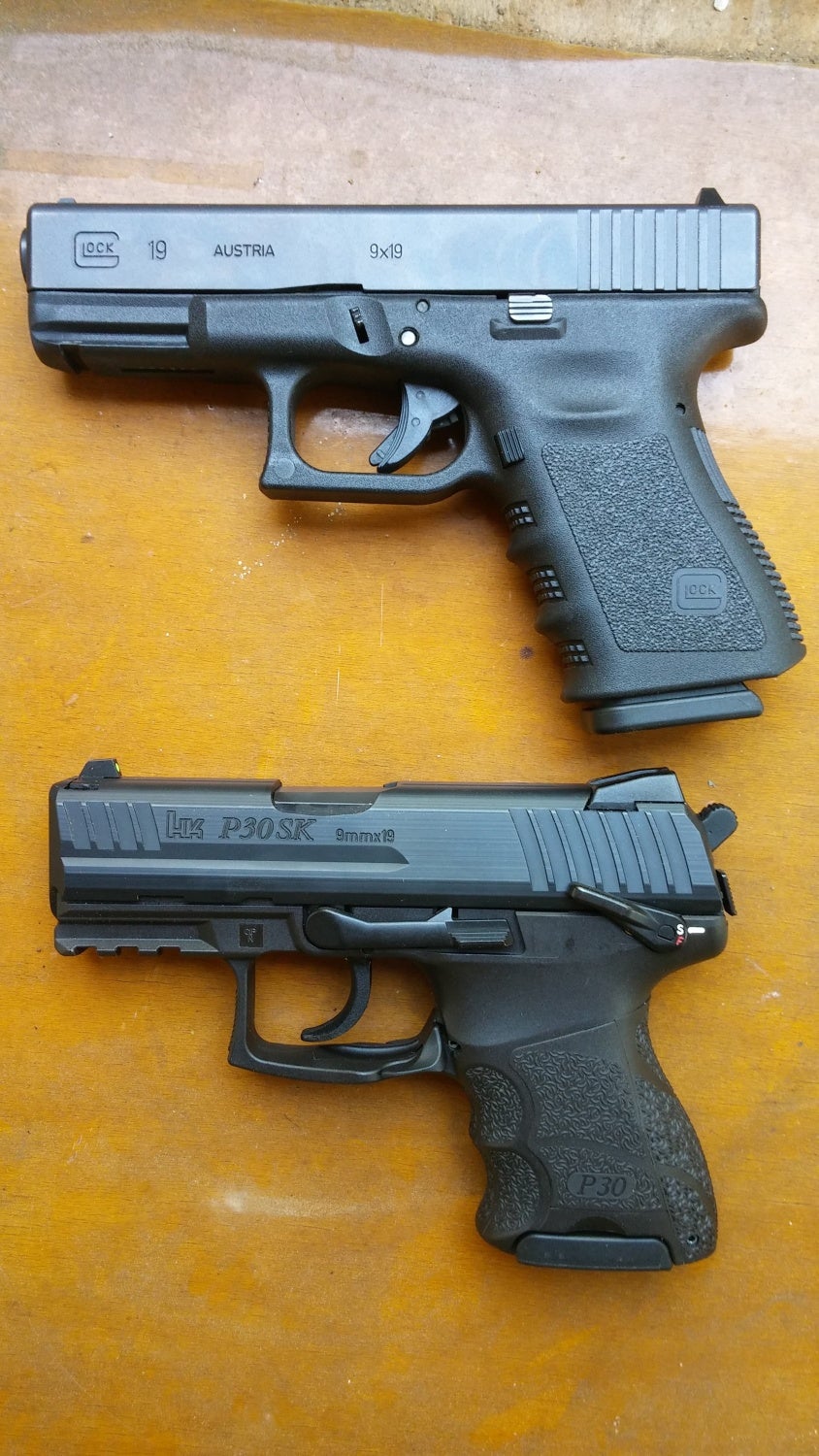
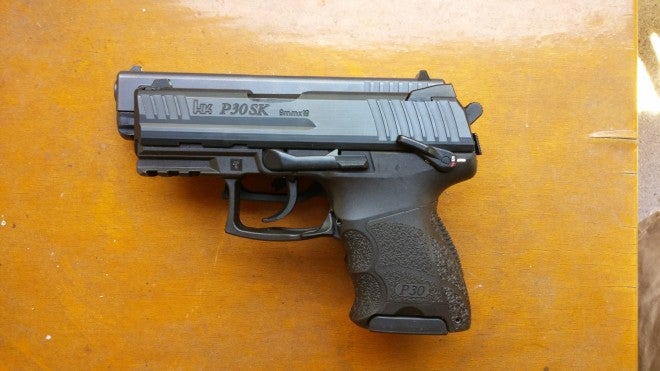
The P30SK compared to the Glock 19. Still shorter and not as long as the Glock, I was surprised at how big the subcompact was nonetheless.
All first impressions behind me, I was eager to take the P30SK to the range. Sadly, the gun ran into trouble in the first three magazines, shooting Fiocchi 115gr ammunition:
A little less than ten malfunctions occurred within the first 23 rounds fired. After the 23rd round, the gun had no malfunctions of any kind that shooting session. After we got home, I took the gun apart to see if there were any obvious problems with it, and I found nothing. The magazines were in fine shape, the handgun wasn’t rubbing anywhere, extractor tension felt good; all of the usual suspects turned up fine. If these malfunctions were the result of a “break-in”, I would have expected to see some rubbing or wear in critical areas that could be slowing down functioning in a brand-new gun, but there was nothing like that. Was it just the ammunition?
I took the P30SK to the range several more times, and switched the ammunition to Geco 115gr. Most likely as a result of this, the gun ran absolutely fine, and I had no further issues with reliability. My overall feeling about the gun’s reliability and dependability is very good, but those first 23 rounds are an excellent example of why it’s important to try out ammunition and firearm combinations before you depend on them.
Once I had that issue sorted out, I was better able to evaluate the gun’s shooting characteristics. Overall, my impression was very favorable, within the context of subcompact double stack handguns in general. In particular, I was extremely pleased with the P30SK’s accuracy:
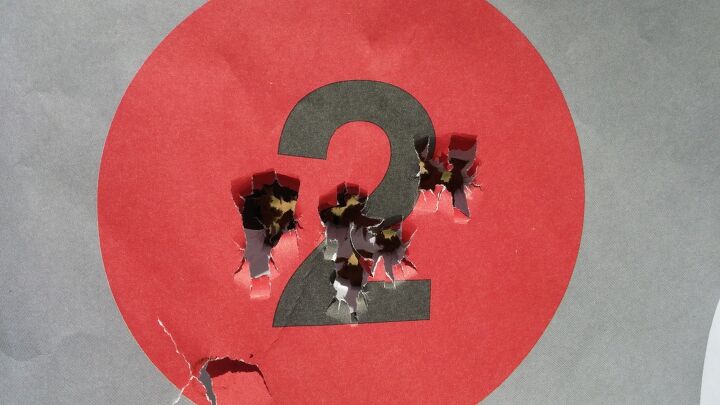
A very tidy 10-shot group at 10 yards. I am not the best handgun shooter in the world, but I was very pleased with the P30SK’s inherent shootability.
To get the input of someone who might better represent a first-time handgun buyer, I handed the P30SK over to my SO, and she shot the group below, at the same distance:
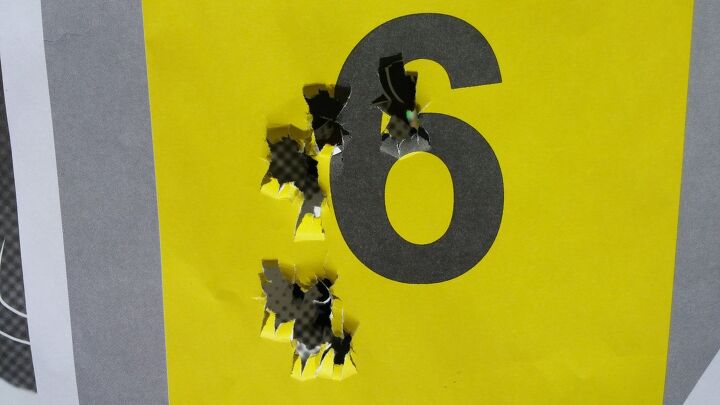
Will the P30SK make you a marksman? No, but with good ammo it won’t hurt, either.
After the shooting session I asked her opinion of the pistol as a whole:
Weight: good. Not noticeably fatigued after a 10 shot group. Unlike most other pistols I’ve shot.
Recoil: More than I’d like, but I was still able to bring the sights back on target after every shot.Grip: Lots of friction, but puts the most stress on the ring and pointer finger. Those two fingers were already a little sore after just two 10-round groups. The grip isn’t long enough for my pinky, which I find a little annoying, though I never felt at risk of dropping it.Trigger: Fine, but nothing special. Didn’t have any roughness and was consistent, so there didn’t seem to be any effect on accuracy.Accuracy: No problem at all. The first 10-round group and a couple of fliers– the product of getting used to a new gun. The second group was a tight three inches at 5 yards with no fliers. Which is as good as I’ve ever done anyway.Brass: Apparently, the direction the brass flies can vary according to the shooter. Unfortunately, for me that means flying straight into my face. At one point a casing even managed to get lodged in between my ear and safety glasses– resulting in a rush to get my glasses off and dislodge the burning piece of metal. This seemed to happen less the more quickly I shot the gun, but was not reliable in any sense. In the first group I shot slowly and 10/10 hit me in the face. In the second group I readjusted my grip and shot more quickly and only about 2-3 hit me. Looking back, it was probably the way I held the gun that caused the cases to fly straight back into my face.”
Regarding her final point, it is interesting to note that her above group was shot with each spent case flying backwards towards her face. Ejection pattern aside, the gun is certainly very shootable! I agree with her assessment that, most likely, her grip was the major factor in why the gun ejected brass in that way. While I think in most cases the ejection pattern will not be an issue for most P30SK shooters, if you are small of stature it may be worth your time to shoot one for yourself to find out, before you make a purchase. All that said, things like this can happen with even well-made high quality guns, so be sure to wear eye protection at the range!
Finally, how does the H&K P30SK shake out in the final assessment?
The Good:
- Good trigger
- Well engineered DA/SA fire control group
- Great ergonomics
- Great accuracy
- Reliable with good ammo
- Excellent fit and finish
The Bad:
- It is a bit larger than the competition.
The Ugly:
- With some shooters, the gun may eject brass straight backward at the shooter’s face.
As H&K’s newest subcompact handgun, the P30SK is a very good option. While my preference is towards simpler, more utilitarian handguns, I would recommend the P30SK to anyone with average-or-larger-sized hands who is looking for a subcompact handgun. For those with smaller hands, or who have trouble finding handguns that fit well, the P30SK may be the best option thanks to its interchangeable grip panels and good ergonomics, but my recommendation is to shoot it first to make sure there are no issues with the ejection pattern.
 Your Privacy Choices
Your Privacy Choices
